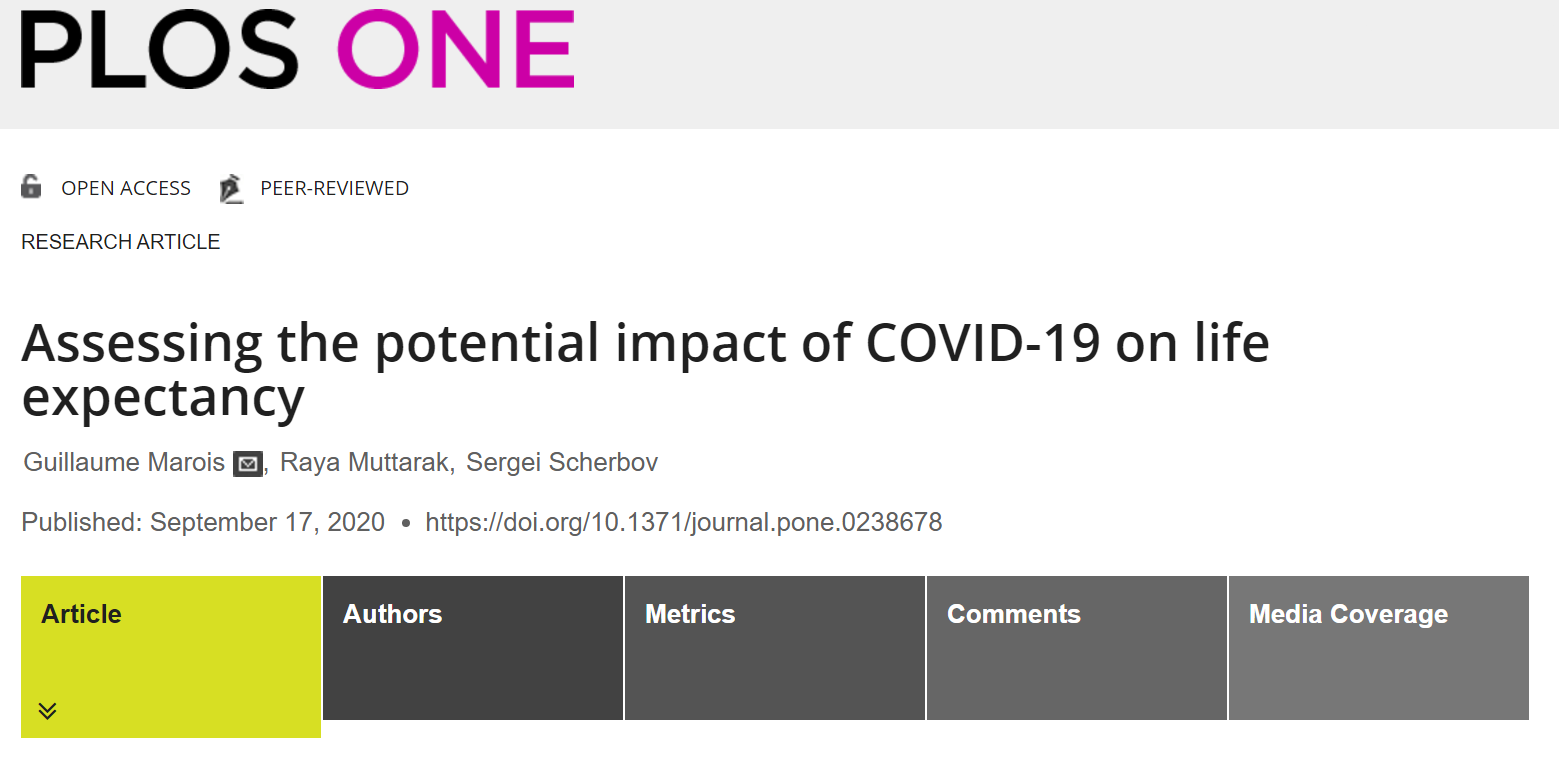
Unless the spread of the disease is contained, COVID-19 will likely lead to reduced life expectancy in severely affected areas, according to a new study published in the journal PLOS ONE. The study examined the impact of COVID-19-related deaths on life expectancy for four broad world regions across multiple rates of infection and age groups.
"Our study provides the first assessment of the potential impact of COVID-19 on period life expectancies according to a range of scenarios of prevalence rates over a one-year period," says Guillaume Marois, the associate professor at the Asian Demographic Research Institute of the Shanghai University, who led the study.
Period life expectancy is a measure of the number of years that an average person may expect to live. Improved healthcare, socioeconomic conditions, and education are among the key factors influencing our health and how long we live. Life expectancy has been used as a measure of human development across countries and regions. Indeed, over the past century, life expectancy has increased significantly in many regions of the world.
In the new study, Guillaume Marois and his colleagues built a microsimulation model that simulates the probability of getting infected by COVID-19, the probability of dying from it, and the probability of dying from another cause for a period of one year, taking into account the different fatality rates from the disease for different age groups. They then calculated the impact of COVID-19 on life expectancy by reconstructing life tables and life expectancies from the simulation and comparing them with those used for the inputs.
They found that at very low prevalence rates, the COVID-19 pandemic would not affect life expectancy, but at prevalence rates of only 2%, it could cause a drop in life expectancy in countries where average life expectancy is high - roughly around 80 years. At higher prevalence rates, the impact on life expectancy would be greater, especially in Europe and North America.
"At 10% prevalence, the loss in life expectancy is likely to be above one year in high life-expectancy countries such as those in Europe and North America. At 50%, it would translate into three to nine years of life lost in high life-expectancy regions. In less developed regions, the impact is smaller given that there is already lower survival at older ages," says Marois. "However, even in the most affected regions, the life expectancy will likely recover once the pandemic is over," he adds.
The new study provides an important first estimate of the impact of COVID-19 on life expectancy, but new developments in healthcare or broader impacts of the pandemic on healthcare access or economic systems could also affect mortality rates and life expectancies. The researchers point out that the potential overload of health care systems at higher rates of prevalence would inevitably lead to higher mortality. On the other hand, as healthcare providers gain more experience and knowledge in treating the disease, mortality rates may decrease.